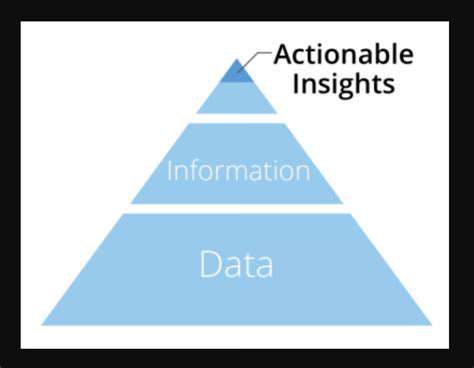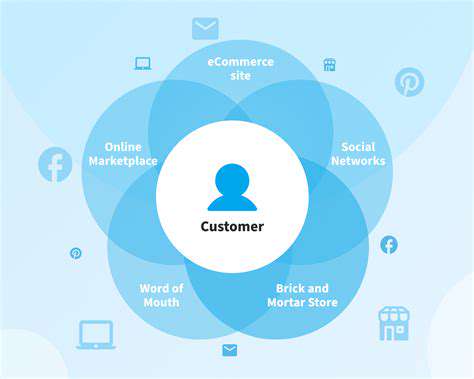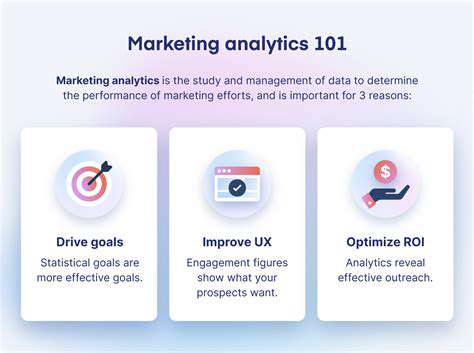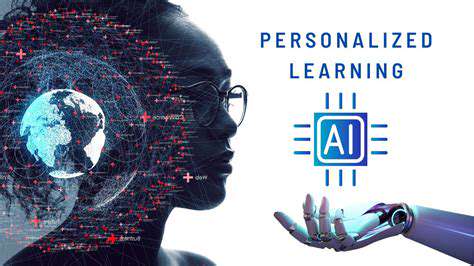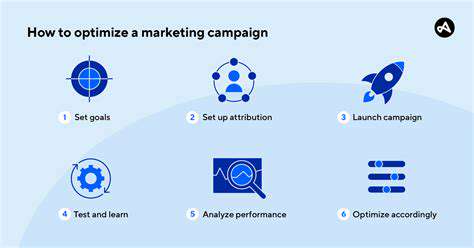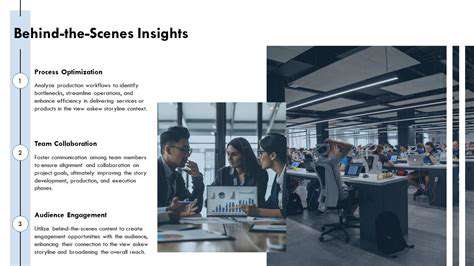Breaking Down Silos: Omnichannel Organizational Structure
Defining the Silo Problem
Organizational silos, those departmental or functional divisions that operate in isolation, create significant hurdles in modern businesses. They often lead to fragmented customer experiences, duplicated efforts, and a general lack of collaboration. This isolation prevents a holistic view of the customer journey, hindering the ability to deliver personalized and seamless experiences across all touchpoints. Companies often find themselves struggling to connect disparate data sets, leading to inconsistent information and inefficient resource allocation.
Imagine a customer service team unaware of the marketing campaigns a customer has engaged with or the product information a sales team has shared. This disjointed information leads to a frustrating experience for the customer and inefficiencies within the organization. The inability to effectively share information across departments significantly impacts the company's ability to adapt and respond to changing market conditions.
Consequences of Siloed Operations
The consequences of operating in silos are multifaceted and often far-reaching. A lack of communication between departments can result in a disjointed customer experience. Imagine a customer receiving conflicting information from different departments, leading to confusion and dissatisfaction. This can damage customer relationships and negatively impact brand reputation. Furthermore, silos often lead to duplicated efforts, where different teams independently work on similar tasks, wasting valuable resources and time.
Another significant consequence is the inability to leverage data effectively. When information is trapped within individual departments, the organization loses the opportunity to gain a comprehensive understanding of customer behavior and preferences. This limitation hinders the ability to personalize marketing campaigns, tailor product offerings, and ultimately, drive revenue growth.
The Impact on Customer Experience
Customer experience suffers significantly when organizations operate in silos. A disjointed experience across various touchpoints leads to frustration and confusion for customers. Consider a customer who needs to contact support for a problem related to a recent online purchase. If the support team isn't aware of the previous interactions the customer had with sales or marketing, they may not be able to offer a personalized and efficient resolution. This fragmented approach ultimately diminishes the overall customer experience and can lead to customer churn.
Inconsistencies in messaging and service standards are also common. Customers might encounter different levels of support or receive conflicting information from various departments, leading to a negative perception of the brand. This inconsistency in service delivery severely impacts brand loyalty and ultimately affects the bottom line.
The Role of Technology in Breaking Down Silos
Technology plays a crucial role in dismantling these organizational silos. Robust CRM systems, unified communication platforms, and shared data repositories can facilitate seamless information exchange between departments. These technologies enable a holistic view of the customer journey, providing a comprehensive understanding of each customer's interactions with the company across all channels. Integrated systems allow for real-time data sharing, enabling faster decision-making and more efficient operations.
Investing in these technologies can equip companies with the tools needed to break down organizational silos and foster a more collaborative work environment. This increased collaboration not only improves customer experiences but also boosts operational efficiency and drives revenue growth. Effective data management, coupled with the right technology, is critical to overcoming the challenges of siloed operations.
Strategies for Achieving a Unified Approach
Moving towards a unified approach necessitates a strategic shift in organizational culture and processes. Cross-departmental collaboration initiatives, training programs focused on cross-functional communication, and clear communication channels are essential for fostering a unified environment. Establishing shared goals and metrics across departments encourages collaboration and aligns efforts towards a common objective.
Promoting open communication and knowledge sharing through regular meetings, workshops, and online forums is crucial for breaking down silos. Transparent data sharing protocols and clear roles and responsibilities also contribute significantly to creating a unified approach. The key is to cultivate a collaborative culture where information flows freely and departments work together towards a common goal.
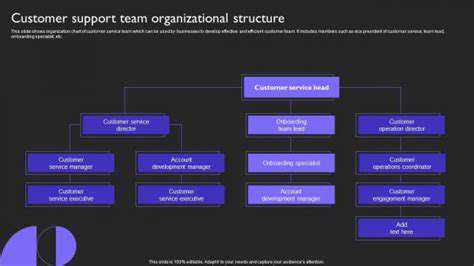
Building Bridges: Breaking Down the Walls Between Departments

Building Trust
Establishing trust is paramount to any successful bridge-building effort. It requires consistent, transparent communication, demonstrating reliability and integrity in actions and words. Building trust takes time and effort, but it's essential for fostering a collaborative environment where individuals feel safe to share ideas and work together effectively. This foundational element is critical for navigating potential conflicts and disagreements, allowing for open dialogue and a mutual understanding of perspectives.
Understanding Diverse Perspectives
Effectively bridging divides requires a deep understanding and appreciation of different viewpoints. This encompasses actively listening to and acknowledging the experiences and perspectives of others, even those who hold differing opinions. By fostering empathy and seeking to understand the motivations behind diverse viewpoints, we can begin to dismantle the barriers that often lead to conflict.
Recognizing and valuing the unique contributions that each individual brings to the table is crucial in fostering a sense of belonging and inclusivity. This ultimately strengthens the foundation upon which bridges are built.
Promoting Active Listening
Active listening is more than just hearing; it's about truly understanding what the other person is saying, both verbally and nonverbally. It involves paying close attention to their words, body language, and tone of voice, and reflecting back what you've heard to ensure accurate comprehension. This practice not only fosters mutual respect but also helps to identify common ground and areas for collaboration.
Encouraging Open Dialogue
Creating a safe space for open dialogue is essential for productive conversations. This involves establishing clear ground rules, ensuring all participants feel comfortable expressing their opinions, and actively encouraging respectful debate. Open dialogue allows for the identification of shared values and goals, which are critical for forging common ground and building consensus.
Fostering Collaboration
Collaboration is at the heart of effective bridge-building. It necessitates a willingness to work together, share resources, and leverage the strengths of all individuals involved. This collaborative spirit fosters a sense of shared ownership and responsibility, which ultimately contributes to the success of any project or initiative. Collaboration promotes innovation and problem-solving by drawing on diverse perspectives and experiences.
Implementing Practical Strategies
Developing and implementing practical strategies is crucial for turning intentions into tangible results. This might involve establishing clear communication channels, creating shared documents, or organizing collaborative work sessions. By carefully planning and executing these strategies, it becomes possible to bridge divides and foster a more unified and productive environment. Careful planning will help to anticipate challenges and develop contingency plans.
Empowering Employees for Seamless Customer Experiences
Breaking Down Communication Barriers
Effective communication is the cornerstone of a seamless customer experience. When departments operate in silos, valuable information about customer interactions is often lost in translation. This leads to fragmented experiences, inconsistent messaging, and ultimately, frustrated customers. Overcoming these barriers requires a proactive approach that fosters open dialogue and clear communication channels between all teams, from sales to customer service to marketing.
Creating a company culture that prioritizes open communication and information sharing is crucial. Regular team meetings, cross-departmental training, and the use of shared platforms for information access can help bridge the gap and ensure everyone is on the same page regarding customer needs and expectations.
Streamlining Processes for Efficiency
Inefficient processes within different departments can significantly impact the customer journey. A customer might experience delays in receiving support, inconsistent product information, or difficulty navigating different touchpoints. Streamlining these processes involves identifying bottlenecks, optimizing workflows, and implementing technology that facilitates seamless transitions between departments.
Adopting a customer-centric approach to process design is essential. This means prioritizing the customer experience at every stage and ensuring that each interaction contributes to a positive and satisfying outcome. For example, a streamlined order fulfillment process can significantly improve customer satisfaction.
Investing in Employee Training and Development
Empowering employees to provide exceptional customer experiences requires ongoing training and development. This includes equipping them with the knowledge and skills needed to understand customer needs, anticipate their concerns, and resolve issues effectively. Comprehensive training programs should cover product knowledge, customer service best practices, conflict resolution techniques, and the company's overall brand values.
Providing opportunities for employees to learn and grow within the company is also critical. This can involve mentorship programs, internal workshops, and access to industry-leading resources. Investing in employee development ultimately benefits both the employees and the customers.
Fostering a Culture of Collaboration
A collaborative environment where employees feel comfortable sharing ideas and working together is paramount to delivering a seamless customer experience. This requires fostering trust, encouraging open communication, and providing opportunities for cross-functional collaboration. Creating team-building activities and encouraging employees to share best practices can significantly enhance teamwork and improve customer interactions.
Leveraging Technology for Enhanced Communication
Technology plays a vital role in breaking down communication silos. Utilizing customer relationship management (CRM) systems, project management tools, and internal communication platforms can provide employees with real-time access to information and facilitate seamless collaboration across departments. Implementing these technologies can help improve data visibility and ensure that everyone is working with the most up-to-date information.
Encouraging Employee Feedback and Input
Actively soliciting employee feedback and incorporating their insights into decision-making processes is crucial for driving positive change. This shows employees that their opinions are valued and empowers them to contribute to a more customer-centric approach. Implementing feedback mechanisms, such as surveys and focus groups, can help identify areas for improvement and highlight issues that may be impacting the customer experience.
Recognizing and Rewarding Excellence
Acknowledging and rewarding employees who consistently deliver exceptional customer experiences is critical for maintaining a positive and motivated workforce. This creates a culture of recognition and reinforces the importance of customer-centricity. Implementing reward programs, public acknowledgments, or special incentives can motivate employees to go the extra mile and deliver outstanding results.

Read more about Breaking Down Silos: Omnichannel Organizational Structure
Hot Recommendations
- Personalizing Email Content with User Behavior
- Geofencing for Event Attendance Tracking
- Reputation Management on Social Media
- UGC Beyond Photos: Videos, Testimonials, and More
- The Future of Data Privacy Regulations
- Accelerated Mobile Pages (AMP) Benefits and Implementation
- The Future of CRM: AI and Voice Integration
- Google Ads Smart Bidding Strategies: Maximize Value
- Common A/B Testing Pitfalls to Avoid
- Local SEO Strategies for Small Businesses


